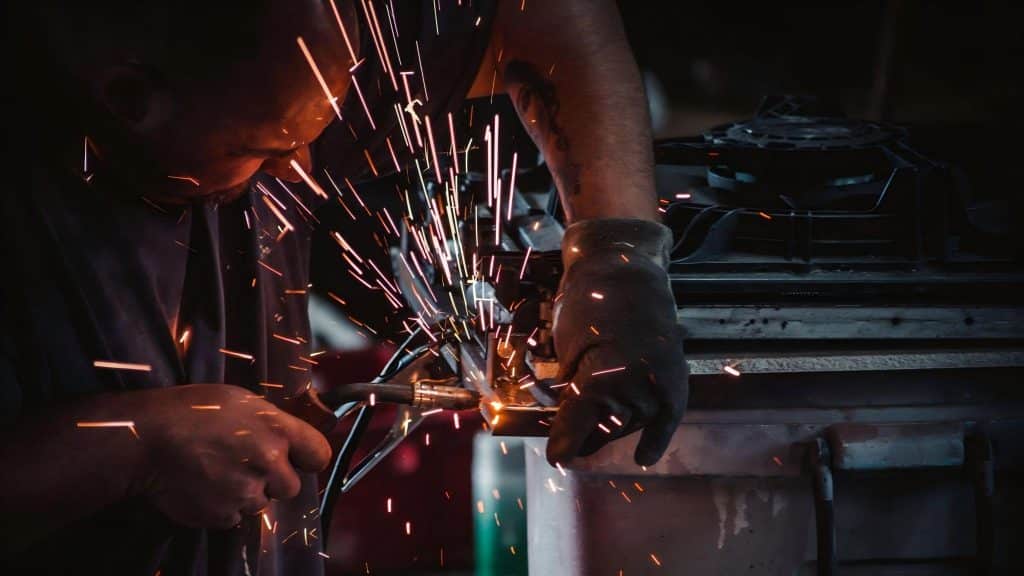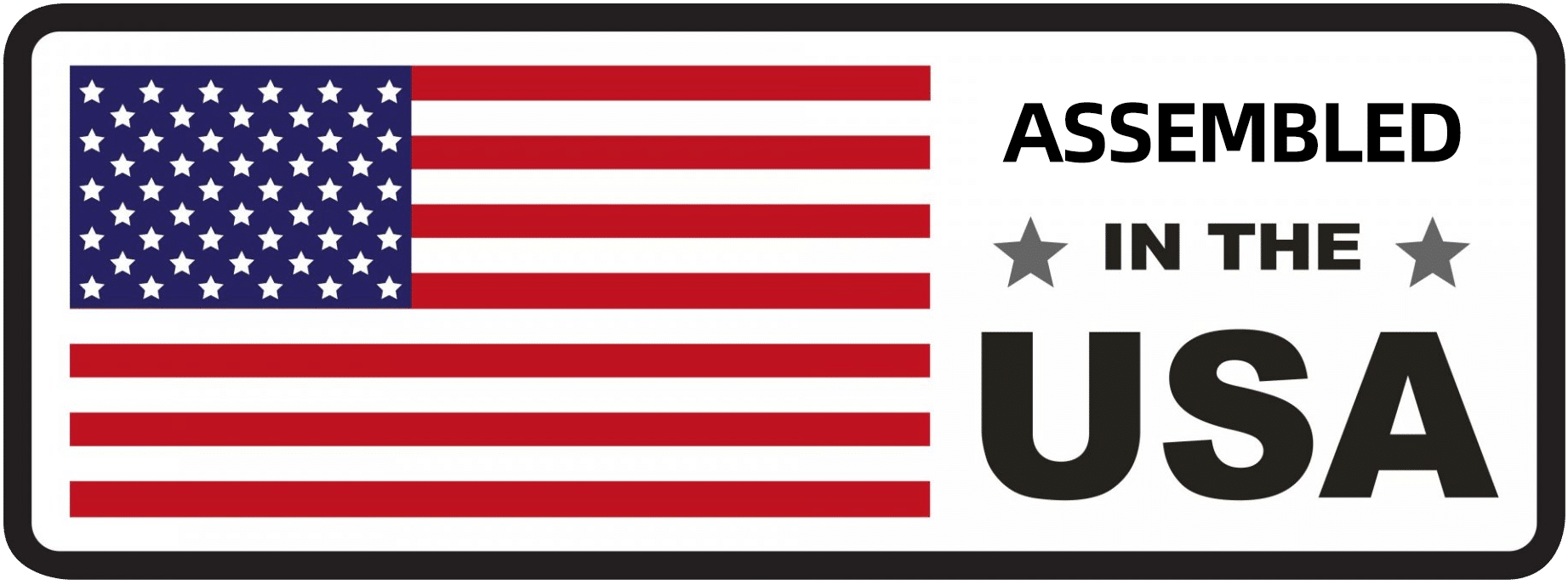
Laser welding’s impressive precision, speed, and energy efficiency propelled it into the center stage of modern manufacturing. From the automotive and aerospace industry to medical equipment production, laser welding is extensively applied.
However, meticulous control of welding parameters is crucial to achieve optimal laser-welded joints. Even the smallest deviations from the standard parameters can compromise the strength and metallurgical quality of the weld.
In this article, we discuss the ideal laser welding parameters for robust and high-quality welds.
Key Laser Welding Parameters and Their Impact
The quality of a laser weld is directly influenced by the parameters listed below. Hence, it is vital to understand their influence on the outcome of a laser welding process.
Laser Power
Laser Power refers to the amount of energy a laser delivers over time. A higher power means the laser produces more heat, which can penetrate and melt metal quickly.
In laser welding, 1000 Watts or more is considered a high-powered setting, while 500 Watts or less is considered low-powered.
Note that higher laser power is not always desirable. The ideal laser power depends on the welding project. For instance, welding thin metals requires lower power as excessive heat can create a huge heat-affected zone (HAZ) and extreme material distortion.
Welding Speed
This refers to the rate at which the laser moves along the material or penetrates the metal while welding. Most laser welding machines gauge this parameter using millimeters per second (mm/s) or meters per minute (m/min).
Welding speed is inversely correlated to the laser beam’s heat input. At slower rates (~10 mm/s), the laser applies more heat, while faster welding rates (~200 mm/s) lead to less heat application. This means that the thinner the workpieces, require slower welding speed to minimize heat application and thermal distortion.
Most laser welding equipment has its welding speed preset by its manufacturers. However, the operator needs to fine-tune this parameter according to the metal’s properties. Failure to adjust according to the metal’s metallurgy can cause defects in the weld. For instance, if the parameter is set too fast, it can result in incomplete fusion of the workpieces.
Focus (Defocus) Position
The focus or defocus parameter pertains to the location of the laser’s focal point (the narrowest point on the beam’s edge). Adjusting this parameter refocuses the laser’s light either above, below, or on the surface.
There are three common settings for this parameter:
a) Positive Defocus: The laser’s focal point is above the material’s surface. This is usually applied when weak heat power is required to fuse thin workpieces without the risk of burn-through.
b) Negative Defocus: Applied when dealing with thick metals (or in keyhole welding), negative defocus positions the focal point below the metal’s surface.
c) On-focus: For deep yet narrow welds, on-focus places the focal point on the metal’s surface.
Beam Diameter or Spot Size
This refers to the width of the beam that hits the material’s surface. Spot size is a crucial parameter because it usually dictates the laser’s power applied to the surface.
A smaller beam diameter generates dense and intense heat application, which is preferable in welding thick objects. Meanwhile, a larger beam generates less intense heat, which suits thin and delicate materials.
Most precision laser works require a beam diameter of around 0.5 mm. The diameter becomes smaller as well if the project involves fine or intricate details.
Pulse Duration and Frequency (for pulsed lasers)
This parameter is relevant if you are using pulsed laser welding. This refers to the frequency of the laser pulses or bursts every second. Pulse Duration is measured in Hertz (Hz) (e.g., 100 Hz = 100 laser pulses per second).
The ideal pulse frequency depends on the material’s thickness. If the frequency exceeds the material’s welding threshold, it can result in spatter formation or material deterioration.
Shielding Gas Type and Flow Rate
Shielding Gas is a protective gas that envelops the weld area against atmospheric contaminants. Without a shielding gas, the molten metal might interact with oxygen, nitrogen, and moisture, which can result in a porous (presence of tiny spots or cracks) weld
Some commonly used shielding gases are Helium, Carbon Dioxide, Argon, and Nitrogen.
Meanwhile, flow rate pertains to the amount of shielding gas delivered to the welding area over time. For most laser welding applications, a flow rate of 5 to 20 liters per minute is recommended to avoid contamination or oxidation in the weld.
Common Issues in Laser Welding Parameters
Even skilled laser welders experience recurring problems due to misconfigured laser welding parameters. In this section, we will help you diagnose these issues and apply corrective measures.
Terminating the Weld: Many operators struggle to correctly shut off the laser at the end of a seam. An abrupt stoppage of the laser results in a weak joint, while delayed termination can result in material distortion. The solution for this problem is to properly set the laser power and speed to avoid shortage or excessive laser application on the surface.
Spatter Formation: Weld spatter forms when the laser emits excessive heat or wrongly positioned. Another typical culprit is the use of an incorrect shielding gas. Hence, to avoid weld spatter, you need to set the appropriate welding power for the workpieces and use the correct shielding gas that prevents contamination.
Porosity and Gas Entrapment: When small holes or voids are present within a weld, this means that gas bubbles are trapped in the solidified molten metal. This problem is caused by insufficient heat emission of the laser or too rapid welding speed. Sometimes, a contaminated welding area can result in a porous.
Integrating Advanced Equipment for Parameter Control
Optimal parameter control is the key to successful laser welding. And it takes an advanced laser welding machine that can facilitate parameter control with pinpoint precision.
Denaliweld offers cutting-edge laser welding equipment with intuitive controls for easy parameter adjustment. Check out Denaliweld’s top products below:
[insert youtube video: JET 1000:Micro Laser Welding | DENALIWELD]
Denaliweld JET 1000: This 48.5 lbs lightweight, high-performing portable laser welder is designed for maximum precision and versatility. This machine features pre-set optimal parameters for swift welding setting adjustment. The parameter controls are user-friendly and flexible for various materials and applications. It also comes with the advanced CUAL laser system that reduces thermal distortion, ensures uniform penetration, and produces consistent weld quality.
Denaliweld Air-Cooled Laser Welding Machine: A compact 90-pound laser welding machine, it is currently one of the smallest and lightest portable laser welders on the market. All of its parameters are pre-set for effortless and one-click operation. And it features an advanced laser control software that precisely regulates laser output.
Achieve Optimized Laser Welding Parameters With Denaliweld
You cannot play dice with laser welding parameters, as even the smallest mistake in the adjustment can compromise weld quality. Every parameter must be set with pinpoint accuracy according to the workpieces involved and project standards.
However, optimal parameter setup can be tricky to perform. It takes high-level expertise and patience to achieve the appropriate levels. But with Denaliweld’s laser welding solutions, you can easily control the laser parameters that help you achieve your target weld output.
Denaliweld is a world-class manufacturer of CE/SGS/WPQR-certified laser welding solutions engineered with advanced parameter control systems for top-notch weld quality, precise application, and safe use.



